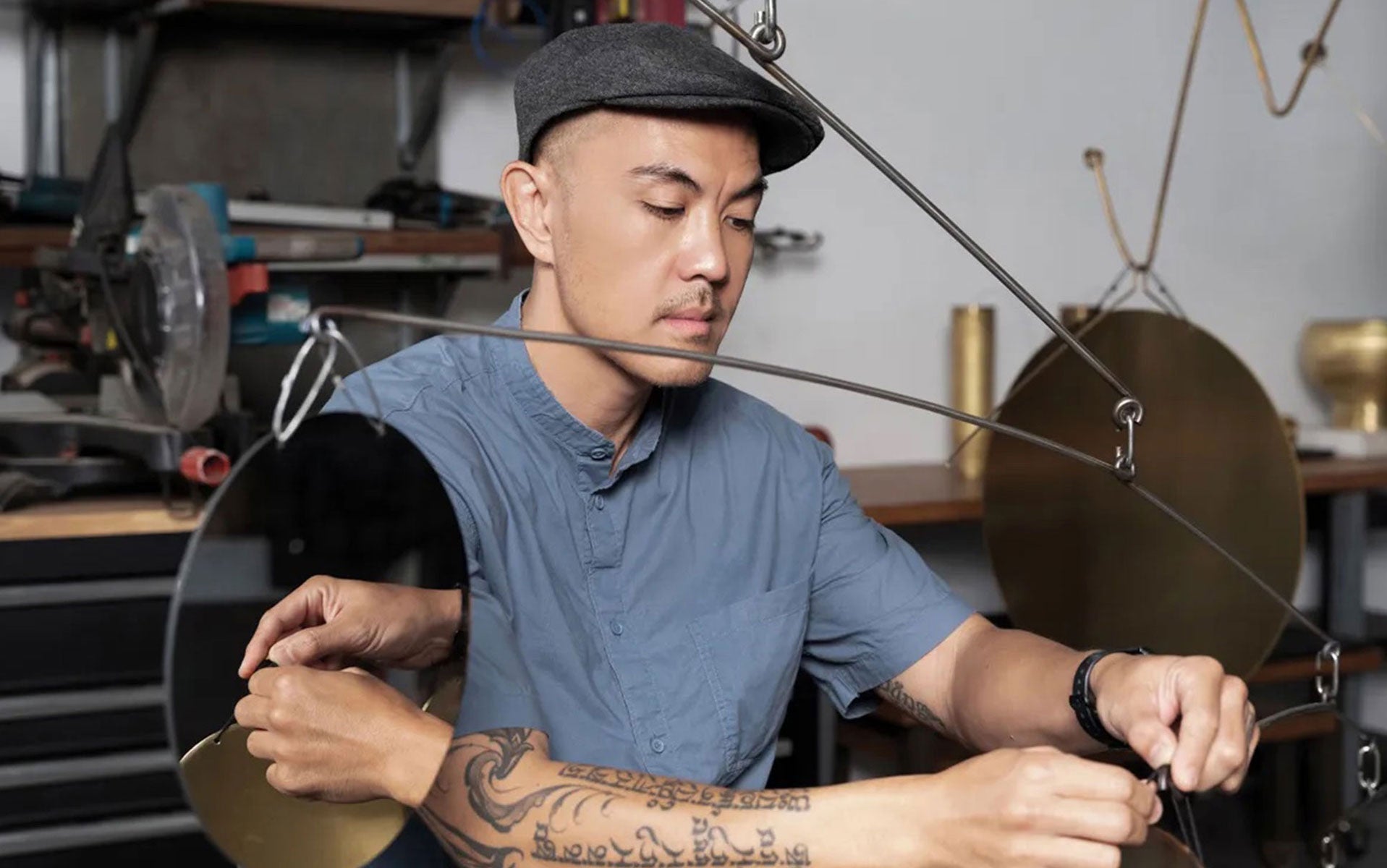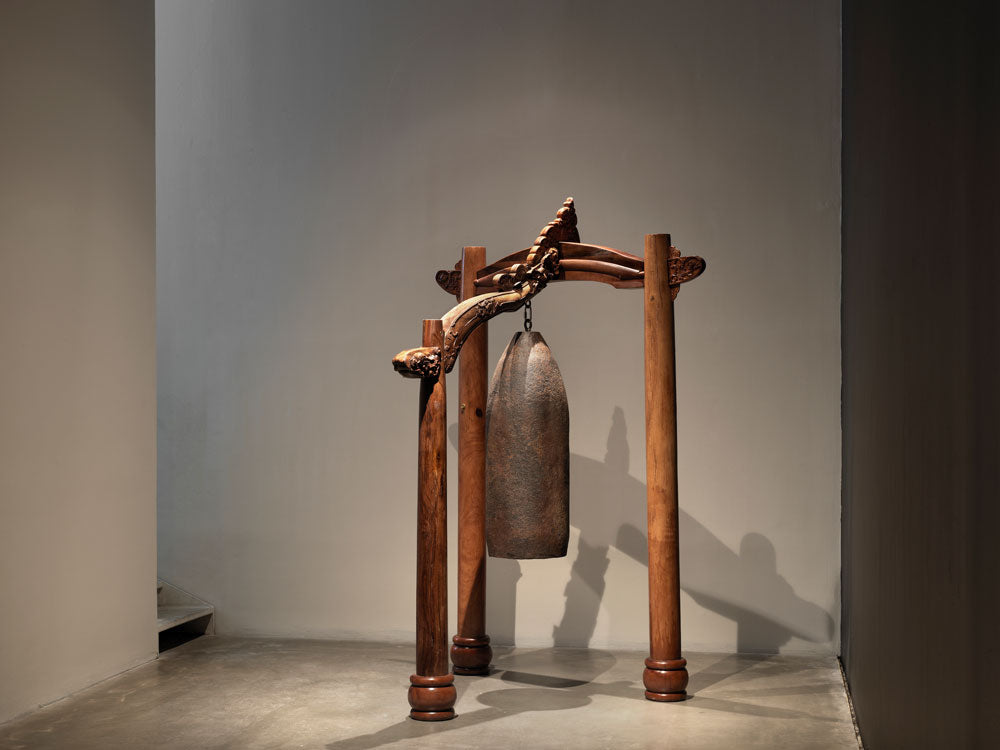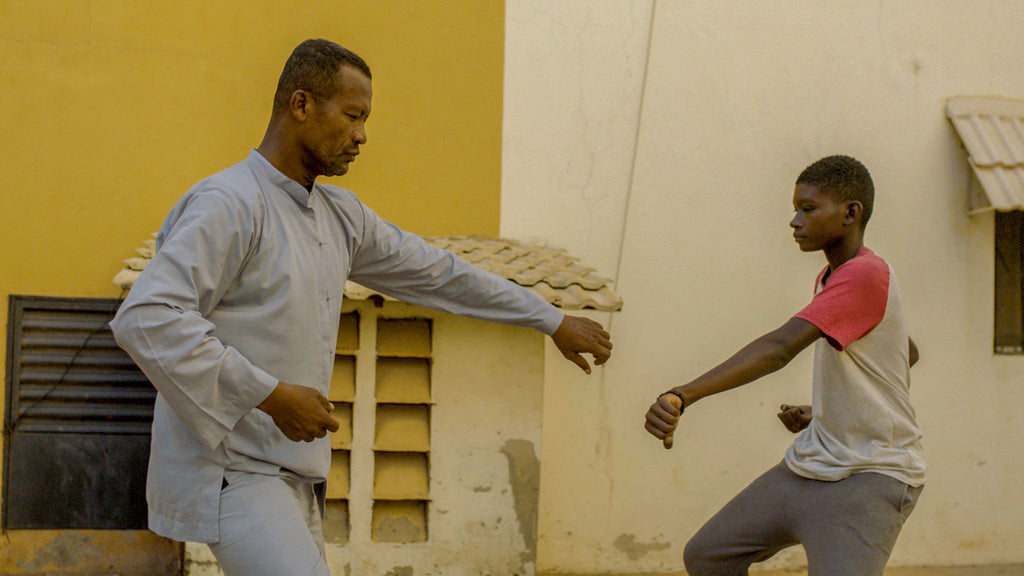
How Tuan Andrew Nguyen Turns Memories into Art
Vietnamese-American artist Tuan Andrew Nguyen and his family emigrated from Saigon (now Ho Chi Minh), Vietnam as refugees to the United States in 1979 when he was only three years old. Nguyen grew up in California and began visiting Vietnam regularly in college. He went on to earn an MFA from the California Institute of the Arts in 2004, co-founded an artist collective The Propeller Group, and established the artist-run space Sàn Art in Ho Chi Minh City, where he now lives. He is this year's winner of the eighth Joan Miró Prize, one of the most prestigious art accolades in the world and will be the subject of a solo exhibition at the institution in Barcelona in 2024. His feature length film The Unburied Sounds of a Troubled Horizon (2023) and sculptural work can be found at his first major U.S. solo exhibition at the New Museum in New York City through September 17.
Nguyen uses storytelling and memory as powerful forms of political resistance and empowerment throughout his work. He rigorously researches specific histories and highlights the Vietnamese diaspora, from the Vietnamese perspective that he says "isn't acknowledged by the dominant narrative." In The Specters of Ancestors Becoming (2019), Nguyen worked with members of the Vietnamese community in Senegal whose origins trace back to West African soldiers sent by French colonizers to fight against the Vietnamese liberation uprisings in the 1940s. No One Living Will Listen (2023) brings up the history of Moroccan soldiers who defected to the Vietnamese side during the same conflict. The voiceover is of Habiba who reads a letter she wrote to her Moroccan father. He died when she was just two years old. It's an emotional recount of her life straddling both her cultures and the hardships she endures as a result.
The Unburied Sounds of a Troubled Horizon (2023) is a fictional story of a young woman who lives in a region of Vietnam that is still living in the aftermath of the War and that is still learning to move on. The film touches on intergenerational trauma and healing, as the protagonist creates art from artillery shells as a healing artform. The cast included local non-actors and all sculptural artworks in the film were created by Nguyen himself, some of which can be found in the New Museum exhibit.
Read below for a deeper understanding of Nguyen's approach to The Unburied Sounds of a Troubled Horizon and the influences in his life.
 Film still from The Unburied Sounds of A Troubled Horizon, Tuan Andrew Nguyen. Courtesy of the artist.
Film still from The Unburied Sounds of A Troubled Horizon, Tuan Andrew Nguyen. Courtesy of the artist.
When did you know you wanted a career in the arts? What inspired you in your youth?
I actually entered university as a biology major with hopes of becoming a doctor. I applied for a double-major under the advice of medical school counselors. My mother aspired to be an architect and I was very influenced by her drafting skills. My father loved philosophy and I was very influenced by his continual questioning of things, like political matters, perception, colonialism, war, etc. So when I started to take art classes, things felt invigorating. There was a special kind of urgency I felt there in the art space. My second year as an artist was a breakthrough year for me. It was then that I discontinued my major in biology and committed myself to art.
Growing up, were you ever discouraged from pursuing the arts, particularly by your family? What advice do you have for others who are interested in the arts but lack the support and resources to pursue the field?
My family was supportive, despite their obvious worry about the difficulties that a career in the arts presented. Their way of expressing their concern was to speak often of the challenges connected to a career in the arts. I appreciated this, as it grounded me as my head tends to float upwards to the sky. My advice for others with a desire to pursue a career in the arts is that first, one must trek forward as if they will never get the support they deserve. This will help one become independent and operate with resiliency. The hardest thing is to find a lasting fire that can continue to move you forward and to sustain your creativity. And it’s okay if it takes a while to find that fire.

Film still from The Unburied Sounds of A Troubled Horizon, Tuan Andrew Nguyen. Courtesy of the artist.
What inspired you to create your latest project, The Unburied Sounds of a Troubled Horizon? What was the creative process like and what does the film mean to you?
I was astounded to discover the amount of unexploded ordnance that was still causing damage nearly 50 years after the end of the war. During the pandemic there were windows of time where we were still able to travel domestically. I used this time to travel to Quang Tri to meet people and listen to their stories. To share stories. To follow different de-mining missions. To sit and walk in the landscape. To imagine. The film is really a culmination of stories, weaved into a narrative.
The film deals with intergenerational trauma and the creative forms of healing from the POV of a Vietnamese family in Vietnam. Why was it important to show this in the film?
One of the most traumatic things in regards to warfare is civil war - to have people of the same nation divided in the way that Vietnam was divided had a devastating effect on individual psychology and national psychology. One way to heal from such deep scars is for children on both sides of the war to move beyond the gaps created [and] continually search for stories that connect, stories that act as stitches on these psychological wounds.
A M117 bomb that was shot into Vietnam by the US Navy during the War was used in the film. It was shipped back to the US from Vietnam for your current exhibition at the New Museum, which feels very poetic. What will happen to it when the exhibition ends?
The M117 is actually a bomb dropped by B52 bomber planes during the American carpet bombing campaigns. To return home transformed from the experience is a mythological journey.

“Tuan Andrew Nguyen: Radiant Remembrance,” 2023. Exhibition view: New Museum, New York. Courtesy New Museum. Photo: Dario Lasagni
You tell stories of the Vietnamese diaspora from different and unique perspectives from previous works like in The Specters of Ancestors Becoming, The Island, and The Boat People. How do you find these stories? Do you think it helps the younger Vietnamese and Vietnamese American generation understand this part of history better while the generations that lived through the War ages?
The many lines of research I find myself exploring deeply usually begin with stories I've heard, most of them as a child. I hope that my stories can affect older generation Vietnamese as well as younger generations, both diasporic and local. I believe that stories hold the power to simultaneously connect and challenge.

Film still from The Specter of Ancestors Becoming, Tuan Andrew Nguyen. Courtesy of the artist.
Can you share what your next project will be?
I can’t share too much at this point, but say that I am attempting to explore the trauma of German colonialism in the Pacific through a very rare boat that sits in an ethnographic museum in Europe. It was the last of its kind.

Discover more of Tuan Andrew Nguyen's powerful work through his website and follow him at @tuan.andrew.nguyen.
Photo banner credit: Tuan Andrew Nguyen in his studio in Ho Chi Minh City, Vietnam. Photo for Art In America by Harry Vu.